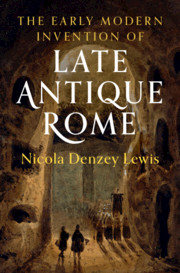Book contents
- The Early Modern Invention of Late Antique Rome
- The Early Modern Invention of Late Antique Rome
- Copyright page
- Dedication
- Contents
- Illustrations and Maps
- Acknowledgments
- Abbreviations
- Introduction
- 1. The Reinventio of the Hidden City
- 2. Rewiring the Sacred Circuit (Roma Sancta Renovata)
- 3. Remains to Be Seen (or, On the Holy Corpse)
- 4. Peter’s Bones
- 5. De Rossi’s Deception: Crafting the Crypt of the Popes
- 6. Raising Late Antique Jews from the Valley of Dry Bones
- 7. Disposing of Depositio (Ad Sanctos)
- 8. Inventing Christian Rome
- Bibliography
- Index
1. - The Reinventio of the Hidden City
Published online by Cambridge University Press: 21 August 2020
- The Early Modern Invention of Late Antique Rome
- The Early Modern Invention of Late Antique Rome
- Copyright page
- Dedication
- Contents
- Illustrations and Maps
- Acknowledgments
- Abbreviations
- Introduction
- 1. The Reinventio of the Hidden City
- 2. Rewiring the Sacred Circuit (Roma Sancta Renovata)
- 3. Remains to Be Seen (or, On the Holy Corpse)
- 4. Peter’s Bones
- 5. De Rossi’s Deception: Crafting the Crypt of the Popes
- 6. Raising Late Antique Jews from the Valley of Dry Bones
- 7. Disposing of Depositio (Ad Sanctos)
- 8. Inventing Christian Rome
- Bibliography
- Index
Summary
Chapter 1 interrogates the concept of sacred space – particularly the sacred space that is associated with the burial of the dead. For whom is it sacred and how did it become so? Drawing on the works of Jerome and Prudentius – both of whom redraw conceptual maps of late fourth-century Rome in their writings – I consider the theoretical approaches to space and place of Jonathan Z. Smith and the environmental psychologist Kenneth Craik. I ask the question: How do we reshape the past through invocations of place and reorientation of space?
- Type
- Chapter
- Information
- The Early Modern Invention of Late Antique Rome , pp. 24 - 70Publisher: Cambridge University PressPrint publication year: 2020

